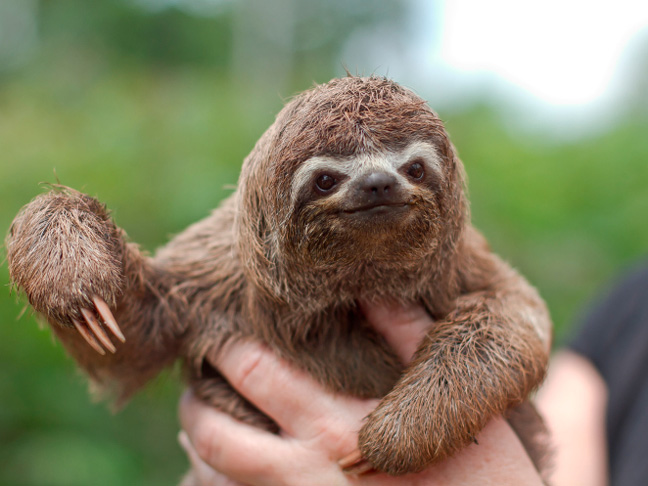Daddy/daughter movie night is a longstanding, sacred tradition in our house. It happily coincides with Mama’s “reading a book in a soothing bath” night. Last Friday, I decided to forgo my bubbly free time and crash their viewing party. The kids chose one of their favorite movies that featured critically endangered birds who are fighting to save their home from deforestation at the hands of some morally bankrupt loggers.
Let me just say, I’m a tree hugger from way back. The “reduce reuse recycle” slogan really stuck with me as a kid. I would go from room to room turning off lights, and I often reminded my parents to recycle. Even now, the recycle urge in me strong, and I love entertaining, non-preachy ways to pass on my obsessions and teach my kids about the environment. Needless to say, the movie’s plot prompted my girls to want to learn more about threatened and endangered species, and for the past few days, our dinner chat has been filled with questions and reciting crazy facts about endangered species. I’m thrilled when my kids take an interest in something else outside of playing dress up with their dolls for the 50-millionth time.
Thanks Facebook, I’m constantly collecting fascinating facts in my brain bank, and this was a good opportunity to share some crazy things I’ve learned with them. After sharing a few of my favorites, I challenged them to collect a few facts about endangered species that they thought were just plain crazy, and report them back to us. Here’s what we came up with.. You wont believe what some of these animals do, how they live, and most importantly, that they’re critically endangered.
- Three-toed sloths have an extra vertebrae in their necks, so they can turn their heads 270 degrees. That’s almost a full circle! (source: National Geographic)
- Male emperor penguins don’t eat for two months. Instead, they focus on protecting newborn baby penguins from the harsh climate, while mother penguins hunt for food to bring home. (source: National Geographic)
- The blue whale has a heart the size of a Volkswagen Beetle. (source: One Kind)
- The howler monkey is the loudest land animal. Its call can be heard from three miles away. (source: National Geographic)
- African elephants have the longest pregnancies in the world. They are pregnant for almost two years! (source: National Geographic)
- The Kauai cave wolf spider lives only in a single cave in Kauai, Hawaii. Since it spends its entire life in the dark cave, it doesn’t need to see and doesn’t have any eyes. (source: Science magazine. Vol. 293. pp. 2378–2381)
- Until 1938, scientists thought coelacanths (pronounced SEEL-uh-kanths) had gone extinct with the dinosaurs 65 million years ago. They are sometimes called “living fossils.” (source: National Geographic)
- The burrowing owl moves into evacuated prairie dog tunnels. They bring dung back to the opening of the tunnel to lure dung beetles there so they can eat them. (source: Mental Floss)
- The blue whale weighs as much as thirty elephants and is as long as three Greyhound buses. (source: The Fact Site)
- When male green anaconda compete for the same female, they will form a ball around her to try to mate. This ritual can last up to a month. (source: National Geographic)
- Indian elephants may spend up to nineteen hours a day feeding, and they can produce about 220 pounds of dung per day. (source: One Kind)
- You can tell the age of a whale by looking at the wax plug in its ear. This plug in the ear has a pattern of layers when cut lengthwise that scientists can count to estimate the age of the whale. (source: Science Kids)
- Whales love to sing! They use this as a call to mates, a way to communicate, and also just for fun. After a period of time they get bored of the same whale song and begin to sing a different tune. (source: Science Kids)
- The Atlantic bluefin can reach ten feet in length and weigh as much as 1,500 pounds (more than a horse). (source: WWF)
- Some tuna fish can swim at a rate of forty-three miles per hour. (source: WWF)
While we can’t make every night a movie night (and there are only so many eco-centric kids’ movies out there anyway), there are a few fun ways to keep the conversation going, like with Yowie Confectionaries, which are chocolate treats for kids that serve a higher purpose. Each Yowie Confectionary consists of a milk chocolate capsule that can be cracked open to reveal limited-edition lifelike animal. There’s also an informational leaflet and an app download code that helps kids discover more information about it, including threats to that animal and its environment. As a parent, I can head online here to find more videos, games, and other activities surrounding animals to share with my kids.
I’m glad my kids are taking an interest in the world around them, and we’re all eager to rally around the table each night with our new facts and finds. Hopefully this phase lasts long enough for them to outgrow playing dress up with their dolls. (Hey, a gal can wish, right?)
image: Getty/Snic320
*This post was sponsored by Yowie World.








